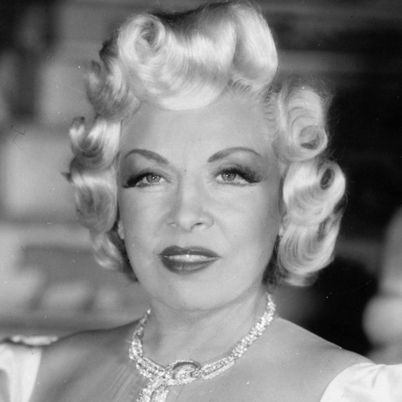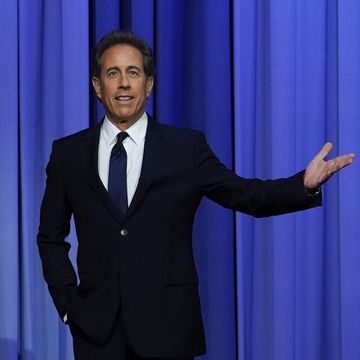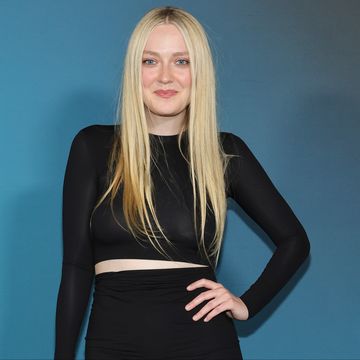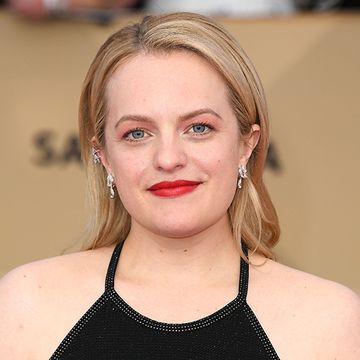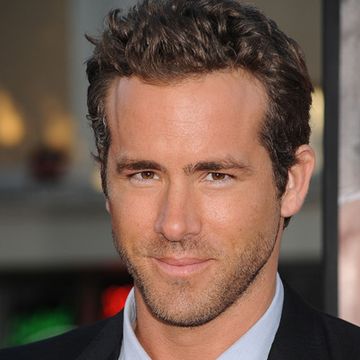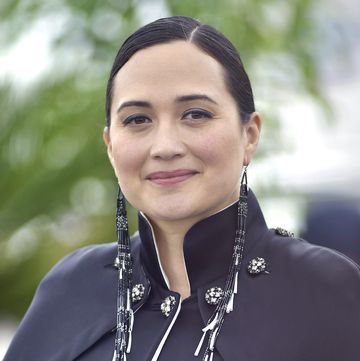(1893-1980)
Who Was Mae West?
Mae West hit her Hollywood stride in her late 30s when she might have been considered in her "advanced years" for playing sexy harlots, but her persona and physical beauty overcame any doubt. The blunt sexuality of her films aroused the wrath and moral indignation of several groups, but this sexuality is what she is remembered for today.
Early Life
Born Mary Jane West on August 17, 1893, in Brooklyn, New York, to Matilda and John West. Family members called her Mae (spelled May at the time) from an early age. Matilda, also known as "Tillie," was a German immigrant and aspiring actress. But her parents' disapproval in career choices brought her dreams down to a more realistic profession as a garment worker. However, she clandestinely abandoned her seamstress work for the less respectable, though somewhat more glamorous work, as a fashion model and never totally gave up the prospect of having some career in show business.
West's father was a prizefighter known around the Brooklyn area as "Battlin' Jack" West, not so much for this success in the ring as for his reputation for street brawling. When he wasn't fighting in authorized boxing matches, he was fighting in underground street fights or exhibiting his boxing prowess in pick up fights at Coney Island Amusement Park. Later, after he met Tillie, he worked as a "special policeman" (most likely as muscle for local business and crime bosses) and then as a private detective.
West was the oldest of three children, but West was her mother's favorite from the beginning. With West, Tillie's childrearing was out of step with more the traditional Victorian methods of "children should be seen and not heard." Instead, she preferred to humor and coax West, rather than harshly discipline her. West quickly obliged with precocious and, at times, obstinate behavior.
West started to show signs of talent at the age of 3, mimicking family members and friends, much to the delight of her father and mother. While she was too young to understand the art of impersonation, she learned quickly about the power of commanding an audience. Tillie soon took West to plays and vaudeville performances where she was enthralled with the make-believe world of characters, dance, and musical acts. Throughout West's life, she would reminisce about the many legendary performers she saw in her youth, but one artist always stood out for her: African American entertainer Bert Williams, whom she credits as her earliest influence. It was from Williams' performances that she learned the art of innuendo and double entendre, which he used in his act to mask his satire on race relations.
She made her first stage appearance at the age of 5 at a church social. While her home performances made her father proud, he wasn't too keen on her performing for the public. Tillie blithely ignored his concerns and enrolled her in dance school at the age of 7. Soon she was appearing at amature night at the local burlesque theaters under the stage name "Baby May." After winning First Place and a $10 prize, her father became an ardent supporter, dragging her costume case to performances and sitting in the audience as her No. 1 fan.
Professional Vaudeville Career
In 1907, 14-year-old West began performing professionally in Vaudeville in the Hal Claredon Stock Company. Her mother made all her costumes, drilled her on rehearsals, and managed her bookings and contracts. Tillie was finally in show business as her daughter's manager. West's act was a subtle spoof on Victorian innocence and sentimentality. She portrayed a young girl dressed in a pink and green satin dress, a large white hat and pink satin ribbons. But she impersonated adult Vaudeville and burlesque performers, and danced and sang popular songs inflecting sexual overtones.
West spent the next few years on the vaudeville circuit with William Hogan, a small time performer and family friend. West played Hogan's young girlfriend in a takeoff of a Tom Sawyer theme. But it's likely that the strong-willed West had a hand in revising her soft spoken Becky Thatcher character into a more assertive and spunky foil for Hogan. When work was slow, which it often was for many performers in Vaudeville, she would go on the burlesque circuit playing before a predominantly male working-class audience. Social conventions did not allow such a young girl to be even present in such surroundings, let alone performing, but West thrived and honed her performance skills.
Sometime between 1909 and 1910, West met Frank Wallace, an up-and-coming vaudeville song-and-dance man. The story goes that Wallace was introduced to West by her mother, Tillie, who saw an opportunity to have her team up with a performer who was going places. After a few weeks of intense rehearsal, they formed an act and went out on the burlesque circuit. The tour went deep into the Midwest, far from the protective supervision of West's mother. According to her biographers, Wallace proposed marriage to her several times, but she refused, instead having affairs with several other male cast members. She was counseled by an older cast member, Etta Wood, about her "wicked ways" and stressed that marriage would offer her protection against being alone and pregnant.
From this, West seemed to have a change of heart and on April 11, 1911, she and Frank Wallace were married by a justice of the peace in Milwaukee, Wisconsin. Only 17, she lied about her age on her marriage certificate (18 was the legal age for marriage in Wisconsin at the time) and both newlyweds promised to keep the marriage secret from the public and her parents. The union remained a secret until 1935, when West was well into her movie career and a publicity staff person found the marriage certificate in some old papers. For many years, she claimed she and Wallace had never lived as husband and wife. She broke up the act soon after they arrived back in New York in the summer of 1911.
Later that year, West auditioned for, and got a part, in her first Broadway show, A La Broadway, a comedy review. The show folded after only eight performances, but West was a hit. In the audience on opening night were two successful Broadway impresarios, Lee and J.J. Shubert, and they cast her in the production of Vera Violetta, also featuring Al Jolson. She was with the show only a short time due to conflicts with the show's female star, Gaby Deslys, but the experience paid off. She continued to perform in Vaudeville and off-Broadway in New York. It was during this time that she met Guido Deiro, another Vaudeville headliner. A passionate relationship resulted, and the two tried to be together as much as possible, often arranging for joint bookings. They both expressed their love, lust, and jealously openly, and were known for their outward display of emotion, as well as raging arguments.
For a short time, the couple contemplated marriage, and Deiro even asked West's parents for her hand in marriage (they still didn't know about her earlier marriage to Frank Wallace, of which she finally obtained a divorce in 1920). Tillie strongly refused, reminding her daughter of the pitfalls of married couples in show business. West complied with her mother's wishes, but continued to see Deiro. Her mother continued to undermine their relationship. Finally, Tillie directly expressed disapproval in Deiro, telling West that he wasn't good enough for her. Reluctantly, she complied, and over a brief period of time ended the relationship with Deiro.
West got her big break in 1918 in the Shubert Brothers revue Sometime, playing opposite Ed Wynn. Her character, Mayme, danced the shimmy, a brazen dance move that involved shaking the shoulders back and forth and pushing the chest out. As more parts came her way, West began to shape her characters, often rewriting dialogue or character descriptions to better suit her persona. She eventually began writing her own plays, initially using the pen name Jane Mast.
Playwriting and Controversy
In 1926, West got her first starring role in a Broadway play entitled Sex, which she wrote, produced, and directed. Though the play was a hit at the box office, the "more respectable" Broadway critics panned it for its explicit sexual content. The production also did not go over well with city officials, who raided the show and arrested West along with much of the cast. She was prosecuted on morals charges and on April 19, 1927, sentenced to 10 days in jail on Welfare Island (now known as Roosevelt Island) in New York. The incarceration was cordial, as West reportedly dined with the warden and his wife on a few occasions. She served eight days, with two off for good behavior. The media attention of the entire affair did nothing but enhance her career.
Undaunted by any impression of impropriety, West wrote and directed her next play, Drag, which dealt with homosexuality. The play did well in Connecticut and was a smash hit in Paterson, New Jersey. But when West announced the play would open on Broadway, the Society for the Prevention of Vice intervened and vowed ban it. The Society was a state-chartered organization, originally started by supporters of the YMCA in 1873. The group was dedicated to supervising the morality of the public, and monitoring compliance with state laws. West decided not to tempt fate again, and kept the play out of New York.
West continued to write plays over the next several years, including The Wicked Age, Pleasure Man, and The Constant Sinner. In some, she was given credit as writer and/or producer, but did not play a part. The plays dealt with what today would be called "adult subject matter" with tryst plots and sexual innuendos. Her productions were not easy ones to bring to the stage for a myriad of reasons, primarily the constant changes needed to bring the dialogue and plot lines more in line with the moral codes of the day. On several occasions the actors learned two scripts, one for the general audience and a "more refined" version for the times when they were tipped off that vice agents might be in the audience. Of course, all this only brought more publicity to her productions, and resulted in packed performances.
By 1932, Hollywood began to take notice of West's performances and talent. That year, she was offered a motion picture contract by Paramount Pictures. At 38 years old, she might have been considered in her "advanced years" for playing sexy harlots, but her persona and physical beauty seemed to overcome any doubt. The first film she appeared in was Night after Night, starring George Raft. At first, she balked at her small role, but was appeased when allowed to rewrite her scenes in order to conform more to her performance style.
In the 1933 film She Done Him Wrong, West was able to bring her "Diamond Lil" character to the silver screen in her first starring film role. The "Lil" character was renamed "Lady Lou," and contained the famous West line, "Why don't you come up sometime and see me?" The film was nominated for an Academy Award for Best Picture, and also starred new comer Cary Grant in one of his first major roles. The film did tremendously well at the box office, and is attributed to saving Paramount Pictures from bankruptcy. In her next movie, I'm No Angel, she was again paired with Grant. This film, too, was a financial blockbuster giving West the honor of being the eighth-largest box office draw in the United States. By 1935, West was the second-highest paid person in the United States behind publisher William Randolph Hearst.
However, the blunt sexuality and steamy settings of her films aroused the wrath and moral indignation of several groups. One of these was the Motion Picture Production Code, also known as the Hays Code for its creator, Will H. Hays. The organization had the power to pre-approve films' productions and change scripts. On July 1, 1934, the organization began to seriously and meticulously enforce the code on West's screenplays, and heavily edited them. West responded in her typical fashion by increasing the number of innuendos and double entendres, fully expecting to confuse the censors, which she did for the most part.
In 1936, West starred in the film Klondike Annie, which concerned itself with religion and hypocrisy. Hearst disagreed so vehemently with the film's context, and West's portrayal of a Salvation Army worker, that he personally forbade any stories or advertisements of the film to be published in any of his publications. However, the film did well at the box office and is considered the high-point of West's film career.
As the decade wound down, West's film career seemed to wane somewhat. The few other films she did for Paramount — Go West, Young Man and Everyday's a Holiday — did not do well at the box office, and she found censorship was severely limiting her creativity. On December 12, 1937, she appeared as herself on ventriloquist Edgar Bergen's radio show The Chase and Sanborn Hour in two comedy sketches. The dialogue between West and the show's hosts, Bergen and his dummy Charlie McCarthy, was her usual brand of wit and risqué humor. But days after the broadcast, NBC received letters calling the show "immoral" and "obscene." Moral groups went after sponsor Chase and Sanborn Coffee Company for allowing such "impurity" on their show. Even the FCC weighed in, calling the broadcast "vulgar and indecent" and far below the minimum standard for broadcast programs. NBC personally blamed West for the debacle, and banned her from appearing on any of their other broadcasts.
In 1939, Universal Pictures approached West to star in a film opposite comedian W.C. Fields. The studio wanted to duplicate the success they had with another film, Destry Rides Again, a Western morality tale starring Marlene Dietrich and James Stewart. West, looking for a vehicle to make a comeback in films, accepted the part, demanding creative control over the film. Using the same Western genre, My Little Chickedee's screenplay was written by West. Despite tension on the set between West and Fields (she was a teetotaler and he drank), the film was a box-office success, out-grossing Fields' previous two films.
By 1943, West was 50 years old and considering retiring from films to concentrate on her Broadway stage career. Columbia Pictures' director Gregory Ratoff, a friend of hers, needed to have a successful film to avoid bankruptcy, and pleaded with West to help him avoid financial ruin. She agreed. But the film lacked her double-entendre lines and sly delivery, not to mention its weak plot and lack of a top-rated romantic lead for West to play off. The film opened to bad reviews and suffered at the box office. West would not return to films until 1970.
Late Career
In 1954, West formed a nightclub act which revived some of her earlier stage work, featuring her in song-and-dance numbers and surrounded by musclemen fawning over her for attention. The show ran for three years and was a great success. With this victory, she felt it was a good time to retire. In 1959, West released her bestselling autobiography, Goodness Had Nothing To Do With It, recounting her life in show business. She made a few guest appearances on the 1960s television comedy/variety shows like The Red Skelton Show and some situation comedies like Mister Ed. She also recorded a few albums in different genres including rock 'n' roll and a Christmas album which, of course, was more parody and innuendo than religious celebration.
In the 1970s she appeared in her two last films, Gore Vidal's Myra Breckenridge, in which she had a small part, and her own Sextette (1978). Though Myra Breckenridge was a box office and critical failure, it did find an audience on the cult film circuit and served to revitalize many of her other movies at film festivals. In 1976, West began work on her final film, Sextette. The picture was adapted from a script she wrote for the stage, but the production suffered from several problems including daily script revisions, creative disagreements, and West's difficulty remembering her lines and following set direction. Yet, being the professional she was, she persevered and the film was completed. The critics were devastating in their reviews but, like Myra Breckenridge, the movie has endured as a cult-film classic.
Death
In August 1980, West had a severe fall while getting out of bed. She was taken to Good Samaritan Hospital in Los Angeles, California, where tests confirmed she had suffered a stroke. The rehabilitation was complicated, with a diabetic reaction to the formula in her feeding tube. On September 18, 1980, she suffered a second stroke that left much of her right side paralyzed. She then developed pneumonia. Her condition showed some signs of stabilizing, but the overall prognosis was good, and she was released to her home for her convalescence. On November 22, 1980, West died at the age of 88. She was entombed in Brooklyn, New York.
QUICK FACTS
- Name: Mae West
- Birth Year: 1893
- Birth date: August 17, 1893
- Birth State: New York
- Birth City: Brooklyn
- Birth Country: United States
- Gender: Female
- Best Known For: Mae West started in Vaudeville and on the stage in New York, and later moved to Hollywood to star in films known for their blunt sexuality and steamy settings.
- Industries
- Film
- Theater and Dance
- Astrological Sign: Leo
- Death Year: 1980
- Death date: November 22, 1980
- Death State: California
- Death City: Los Angeles
- Death Country: United States
Fact Check
We strive for accuracy and fairness.If you see something that doesn't look right,contact us!
CITATION INFORMATION
- Article Title: Mae West Biography
- Author: Biography.com Editors
- Website Name: The Biography.com website
- Url: https://www.biography.com/actors/mae-west
- Access Date:
- Publisher: A&E; Television Networks
- Last Updated: November 30, 2020
- Original Published Date: April 2, 2014
QUOTES
- It is better to be looked over than overlooked.
- Between two evils, I always pick the one I never tried before.
- There are no good girls gone wrong—just bad girls found out.
